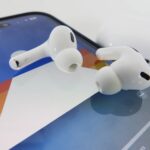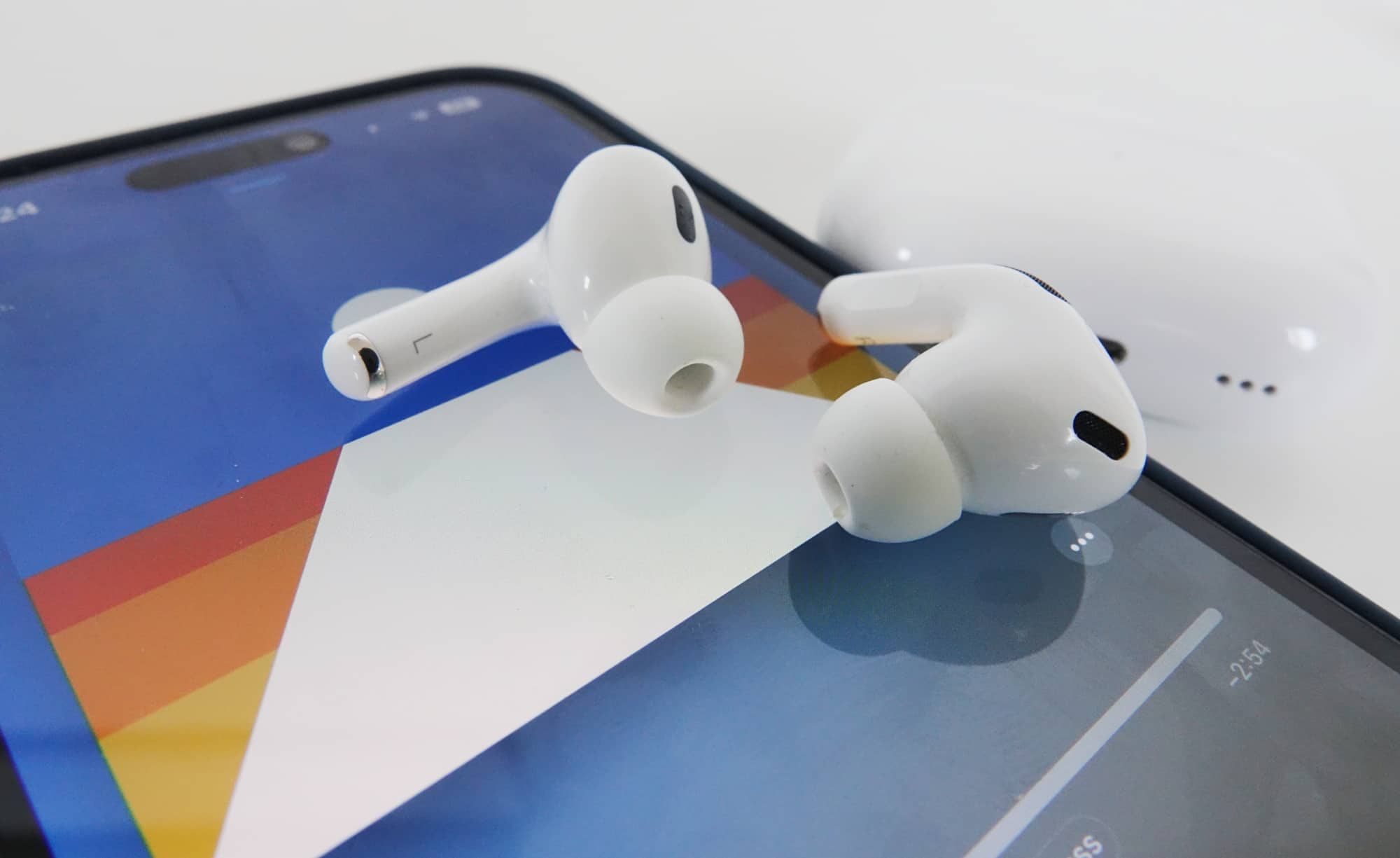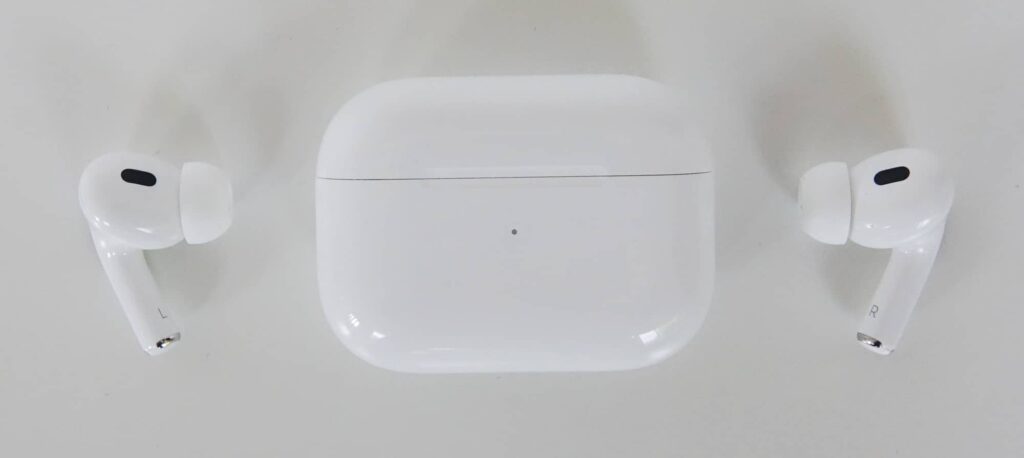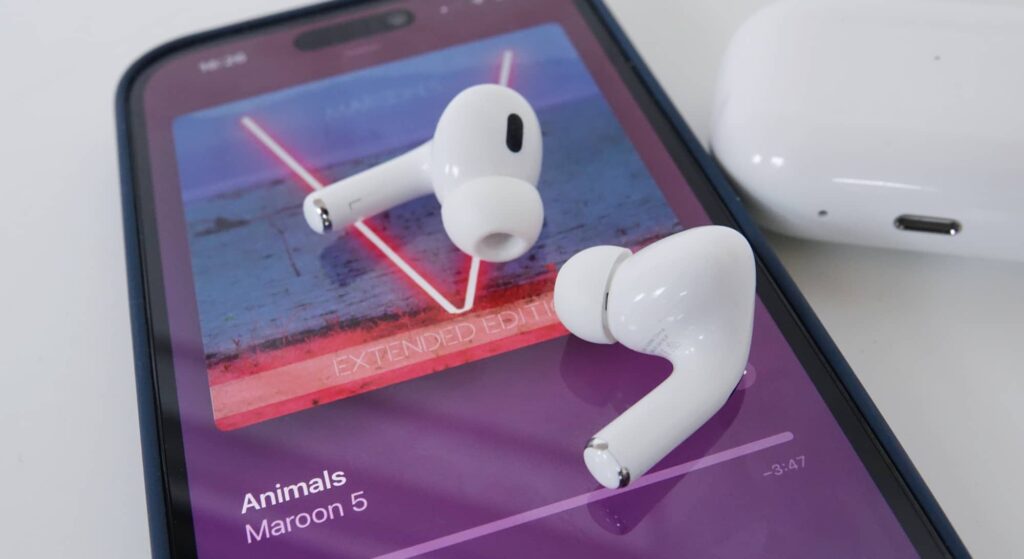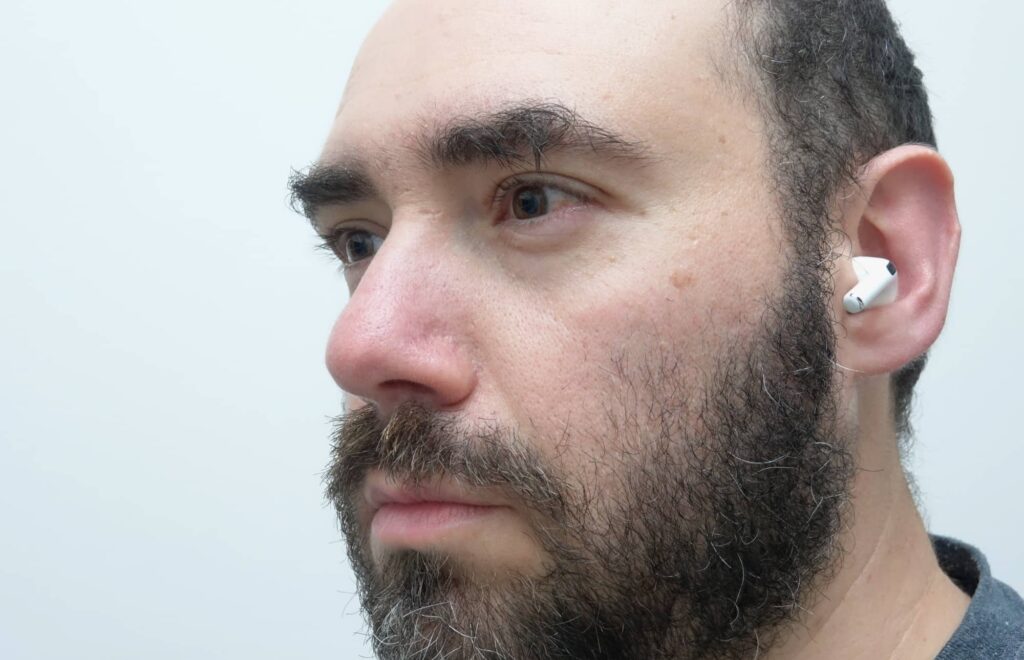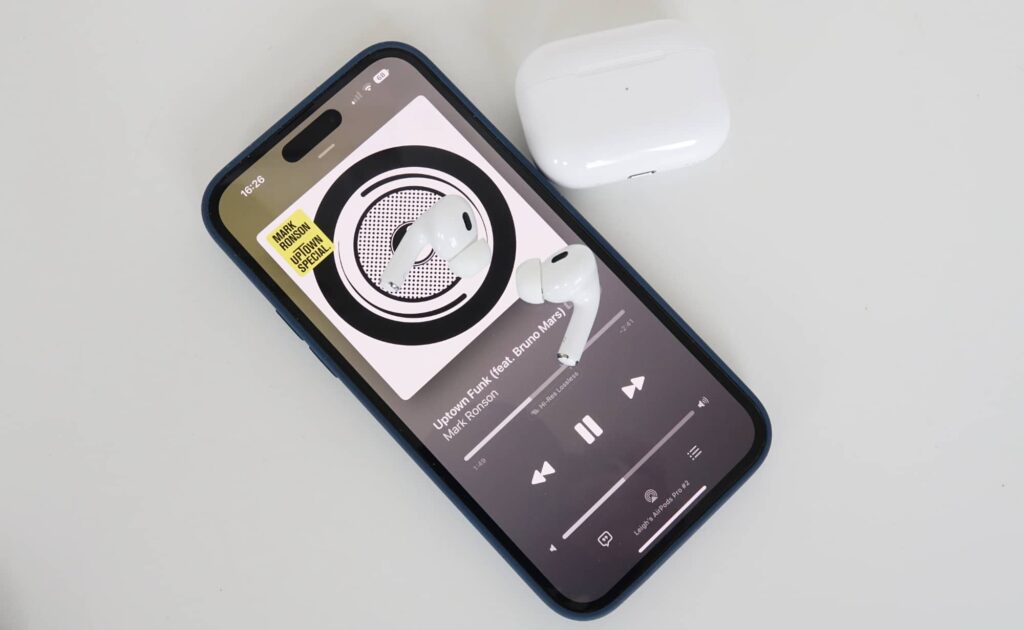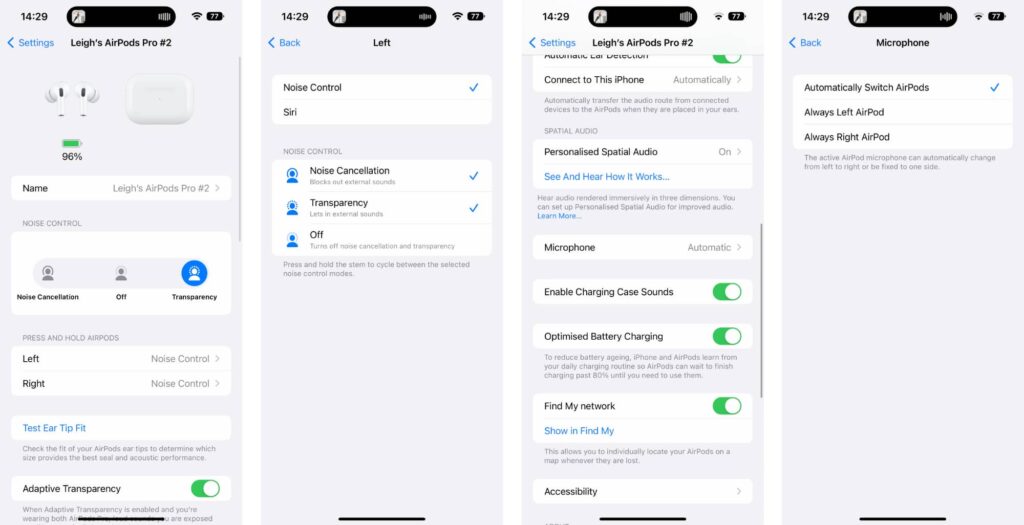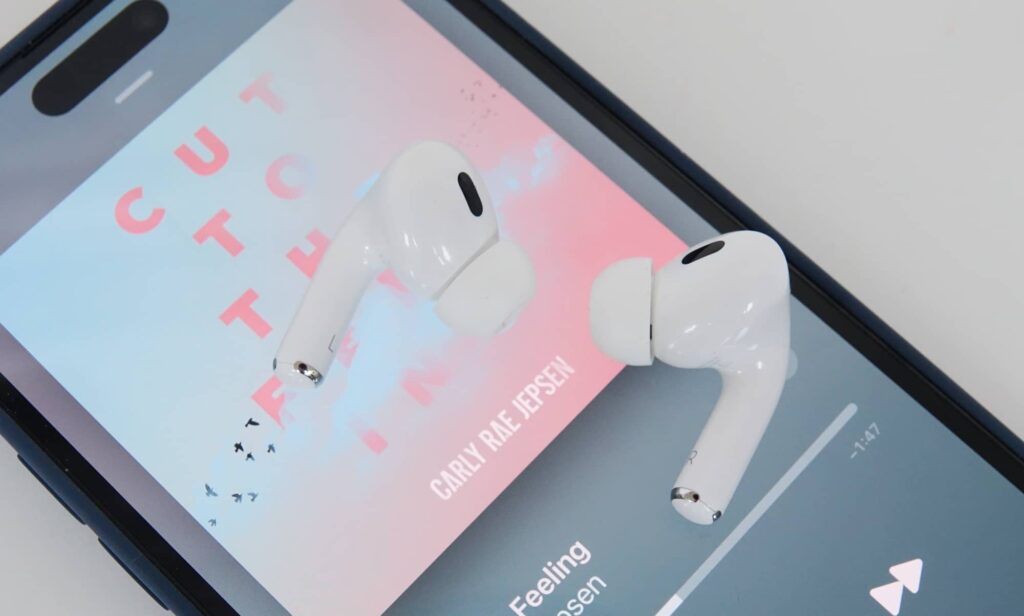Quick review
The good
The not-so-good
Apple’s latest earphones may retain the look of the predecessor, but the AirPods Pro 2 are not only completely different, but excellent in almost every way.
It might be hard to believe, but it’s been three years since Apple’s first take on noise cancellation rocked up, and we’ve been waiting to see what came next. Three years is a long time in product development, and since then, we’ve seen numerous earphone models from the likes of Sony, Sennheiser, Beats, and Bose, and that’s to name a few.
The world of truly wireless earphones is so diverse now, you can find these things anywhere, and the same can be said of noise cancelling headphones. Combine the two technologies and you’re typically talking about the domain of the best of the best, and that’s where Apple sees its AirPods Pro.
But three years is a long while, and it’s high time for an update.
Enter the AirPods Pro second-gen. They may look like the original, but this is an all new pair made for a world that is competing more and more aggressively. Is there enough in the new 2022 AirPods Pro to make you go wow, and to make you buy?
Design and features
Open the box and glance at the second-gen AirPods Pro, and you’ll see pretty quickly that these look exactly like the old model. Experts and enthusiasts alike would have trouble telling them apart, because all of the changes are on the inside.
The big changes include custom drivers and amps, including the new Apple H2 chip which can do some interesting things, such as analyse environment sound at up to 48,000 times per second to create an adaptive noise cancellation and transparency mode for the listener.
There are also a few sensors here, including accelerometers for motion and speed detection, a skin sensor that can know when you take the earphones out of your ear, and microphones for calls and noise cancellation.
Support for spatial audio with head-tracking is a part of the design, and provided you listen to Apple Music, you’ll hear it on supported tracks, though listeners to other services are likely to just get stereo (and there’s nothing wrong with that).
Worth noting is the level of water resistance in the AirPods Pro 2nd-gen extends to both the earphones themselves and the case, which is set to IPX4 water resistance. That’s more akin to sweat resistance and running in light rain, but definitely don’t go swimming with either.
Meanwhile, the case also looks the same, though comes with some new features, such as support for three types of wireless charging (Qi, MagSafe, and Apple Watch), a Lightning wired charge port at the bottom, and a speaker, too, just in case you can’t find it.
Inside the case, Apple has placed a U1 ultra-wideband chip, the same tech used on the Apple AirTags, which means Apple’s FindMy network can help track your missing AirPods Pro case, as well.
The box doesn’t offer much that’s different, though: you’ll find a Lightning charge cable and four sets of earphone tips, now covering not just small, medium, and large, but also an extra small (XS) to go with the regular inclusion of S, M, and L.
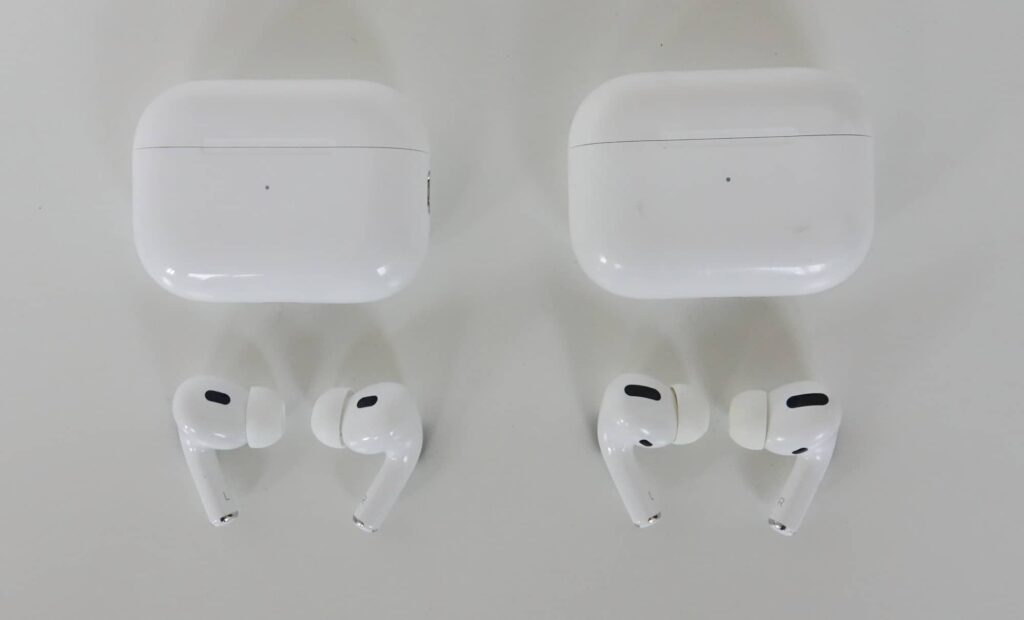
In-use
With a look and feel that’s more or less identical to what Apple had going for it previously, the controls are basically the same. There’s no app, with just a settings screen on iOS that you can mess with, even letting Face ID on recent iPhones snap a shot of your ears to have it understand your head with personalised spatial audio.
Outside of the settings, though, the controls get one change: a little flat edge on the AirPods Pro stem that works as a touchpad volume controller. Swipe up to make the volume go up and down for volume down, with this touchpad being less finicky than other headphone touchpad controllers, though you may find yourself approaching with caution. It’s about small gestures to change the volume, and just helps make the controls easier overall.
That’s not the only control on the AirPods Pro, though; you can still squeeze the stem, which is itself a button of sorts. Squeeze quickly once to pause and play, squeeze twice quickly to go forward a track, and three times to go back one. You can also hold your squeeze to jump between cancellation modes, be it active noise cancellation, transparency, or just both off. Dealer’s choice.
Throw them in your ears with the right ear tip, and you’ll find a pair that very much is still very much going to see you love them or hate them.
We’re fans of the in-earphone style of design these use, and less so of the EarPods look Apple uses for the AirPods 2, though the AirPods 3 did manage to improve things for us. In the second-gen AirPods Pro, Apple isn’t changing the wearable design much, so this is very much a case of finding a tip sized to your ear, fitting it (with a nice snap), and then trying them on. Four tips sizes in the box may make it easier to find a style that matches your head better, but there’s also a fit test on iOS that can help certify whether you’re using the right one or not.
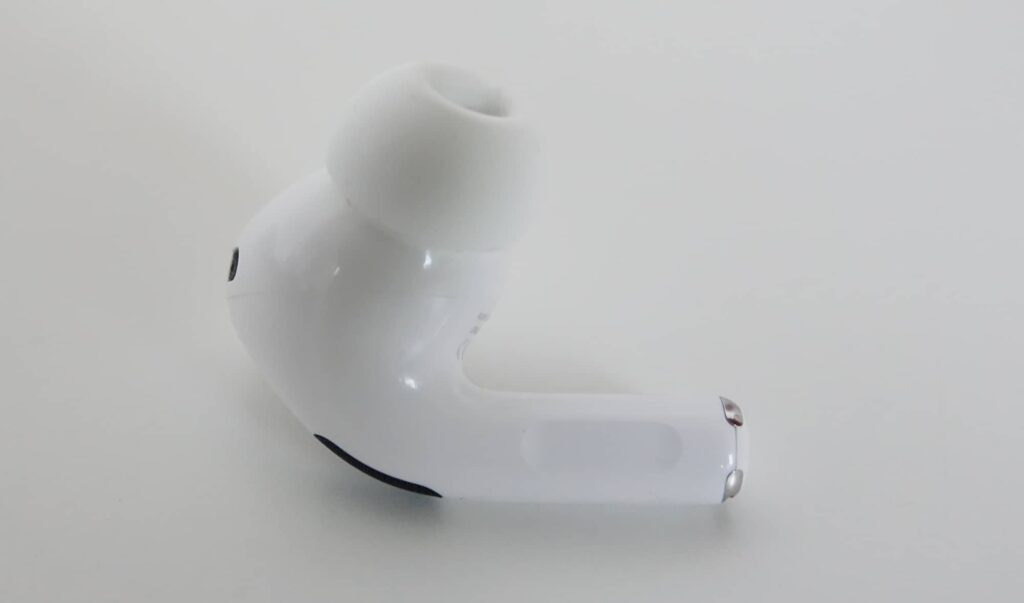
Performance
All that’s left is to test the sound, and for that we turn to the Pickr Sound Test, which you can listen to for yourself. Tested with a pair of head-tracking earphones like these, we were interested to see how the Dolby Atmos variations of some of our test tracks performed, and that made things a little interesting.
In stereo, regardless of the genre, the second-gen AirPods Pro delivered a really solid balance of sound that was easy to fall for. Our notes repeatedly said “great balance, great bass”, and that is a consistent thought on what we experienced with these earphones.
In the electronic world of Tycho and Daft Punk, there’s a very balanced and crisp rendition, with a very wide and spaced out soundstage, while the bass punched hard. Not hard enough to lose yourself in the lows, but hard enough that you knew there was bass in the music, a consistent response across most of our test tracks.
From Carly Rae Jepsen to Mark Ronson to Maroon 5, Deftones, and Muse, the sound of tracks delivered this beautiful attention to balance we’ve seen from Apple before, but somehow felt clearer.
When we switched over to the head-tracking spatial world of Atmos, everything was stepped up just that little bit more. We’re already fans of music in spatial audio, and experiencing the crystal clear audio in what was clearly well spaced layering just made it punch that little bit more.
Perhaps unsurprisingly, we were reminded of the AirPods Max, those big and lovely headphones that deliver a similar performance in a larger over-ear design. They’re similar because they’re so clear and so persuasive: they make you feel as if you’re falling under the spell of your tunes. It’s a delightful experience.
This isn’t the same kind of warm experience you can find from either Sony or Sennheiser, but the result is great all the same.
Noise cancellation and transparency
It’s much the same with the active noise cancellation and transparency modes, because Apple has crafted what could well be the best ANC and hear-through mode around.
In noise cancellation, a combinations of microphones and algorithms make the AirPods Pro cancel out the world, and not just the obvious fuzz and repeatable sounds of every day life.
We were surprised to find nearby voices faded into the periphery, something active noise cancellation doesn’t normally do well with. Even walking by a road, the sound of cars driving by started to drift off, something that also only tends to work when it becomes a choir of noise and sound.
Noise cancellation typically requires repeatable patterns to make a dent, but Apple has joined the best of the best with its degree of cancellation in the second-gen AirPods Pro. They’re that good.
We have much the same experience with the new transparency mode, which is also using algorithms and thousands of samples per second to work out what to bring in and what to keep. For the most part, a transparency mode is just going to open the microphones up and let you hear through them, but it’s almost never at your actual ear’s listening level. In these earphones, though, that’s not actually true.
The sound from the 2022 AirPods Pro transparency mode may as well be your ears. It’s that good, too.
Battery
The increase to sound rendition and noise cancellation performance also comes with and improvement to battery life in both the earphones and the case, despite the earphones being the same size.
A good three years of development has seen Apple throw in up to 6 hours of use with ANC on and an extra four charges in the case. For folks who mightn’t come to this site to read an AirPods Pro review with math, that roughly translates to a maximum of 30 hours of use all up.
You’ll be able to charge that case up using a Lightning cable — sorry, no switch to Type C USB yet — and you can also wirelessly charge it with one of three options: the standard Qi wireless charger, Apple’s MagSafe charger, and even the Apple Watch charger. Basically, it means if you have a charger like the recent Belkin Boost Charge with MagSafe, every single pad on the charger can be used to charge the AirPods Pro second-gen.
We found a little less — closer to the 5 hour mark in our battery tests — likely because we use head-tracking in our spatial audio playback. That’s something Apple does warn about, noting in its specs that you should get closer to 5.5 hours with Spatial Audio and Head Tracking enabled. Still, it’s not half bad.
Value
Priced just like their predecessor, the AirPods Pro have kept something not every competitor has managed over the past few years: value. A consistent value.
While $399 was once where premium noise cancelling earphones were pitched, we’ve seen that expand past $400 in the past year or so. Granted, it’s normally the maximum, but the Bose QC Earbuds II are priced at $429, the Bowers & Wilkins PI7 at nearly $600, and the Bang & Olufsen Beoplay EX priced over it at $650.
Keeping the price at $399 makes Apple seem downright affordable, and puts the AirPods Pro second-generation in line with the major competition in this category, coming largely from Sony’s WF-1000XM4 and the Sennheiser Momentum True Wireless 3.
Given the updates, it’s a solid price to hold onto, and one we’re more than happy to say is value sorted.
What needs work?
Keeping the same price means Apple is competing in the premium noise canceling earphones space quite well, and wisely helps give it a bit of an edge given other pairs cost more.
But there’s one rather obvious thing preventing perfection in the second-gen AirPods Pro: proper compatibility outside of the world of Apple.
If you have an iPhone, an iPad, or maybe even a Mac (or all three), settings for the AirPods Pro are found with the settings for everything else in your device. Things are easy, and you can customise things with ease.
But if you use Android or Windows (or both), there is no customisation to be had. You can wirelessly connect the AirPods Pro and listen in, but you can’t make any changes, tweaks, or customisations. You are stuck.
It’s frustrating that this keeps happening in the Apple and Android divide, because it doesn’t need to be. Google is no better, mind you: we found its most recent Pixel Buds Pro also lacked an Apple app, and the same lockout happened, whereby you could use the earphones with an iPhone, but customisable controls were lost.
This whole thing is genuinely silly, especially when Apple’s other audio brand of Beats overcomes this with an app for Android. It’s the sort of thing we’d love to see Apple do, as well, and would make these earphones perfect. Audio makers do it properly, but the resistance to make OS compatible earphones comes from phone makers, and it’s just wholly unnecessary, affecting the customer at the very end.
Seriously, if the one thing that’s preventing an otherwise amazing pair of earphones from hitting perfection is fairness in compatibility, that is just monumentally silly.
Final thoughts (TLDR)
Setting aside the lack of platform agnosticism, the second-gen AirPods Pro are a stunning success, delivering one of the best updates of any products of the year.
You might look at the iPhone 14 Pro and think “screen changes and a great camera make this the best Apple gadget all year”, and you’d be wrong. The AirPods Pro is that gadget. The second-gen AirPods Pro is the best thing Apple has made all year, and that’s saying something.
These deliver some of the best audio in the same size and price as the original, making them stand out considerably. Much like how the iPhone 14 looks the same as its predecessor, so too do the new AirPods Pro. But that doesn’t matter, because these earphones are simply remarkable when you listen to them.
Don’t just this book by its cover; these may look identical, but the 2022 AirPods Pro are all new inside and highly recommended.
